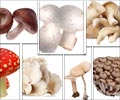Animals and higher plants are known to express endogenous peptide antibiotics called defensins, which are small cysteine-rich peptides found to be active against bacteria, fungi and viruses.
A recent research, published in the October issue of Nature, describes plectasin-the first defensin to be isolated from a fungus, the saprophytic ascomycete Pseudoplectania nigrella. Plectasin has primary, secondary and tertiary structures that closely resemble those of defensins found in spiders, scorpions, dragonflies and mussels. Recombinant plectasin was produced at a very high, and commercially viable, yield and purity at the Danish biotechnology company Novozymes.During the studies, the compound showed potent activity against a range of Gram-positive bacteria, including several strains resistant to conventional antibiotics, but was found less effective against Gram-negative microbes, the researchers noted.
In mice inoculated with a potentially lethal dose of S. pneumoniae in the peritoneum, plectasin was as effective as vancomycin. Plectasin treated mice were more likely to be alive seven days after infection compared with mice in the control arm. In a mouse model of pneumonia, plectasin and penicillin again had comparable efficacy, the researchers found.
The compound showed no evidence of toxicity in the mice, and is excreted without change in the urine of mice, which is a sign that it is safe and effective. However, the authors add that further study will be needed to see if it is safe to use in humans.
The results indicate that Plectasin showed extremely low toxicity in mice, and cured them of experimental peritonitis and pneumonia caused by S. pneumoniae as efficaciously as vancomycin and penicillin.
The authors conclude on the note that these findings identify fungi as a novel source of antimicrobial defensins, and show the therapeutic potential of plectasin. They also suggest that the defensins of insects, molluscs and fungi arose from a common ancestral gene.









